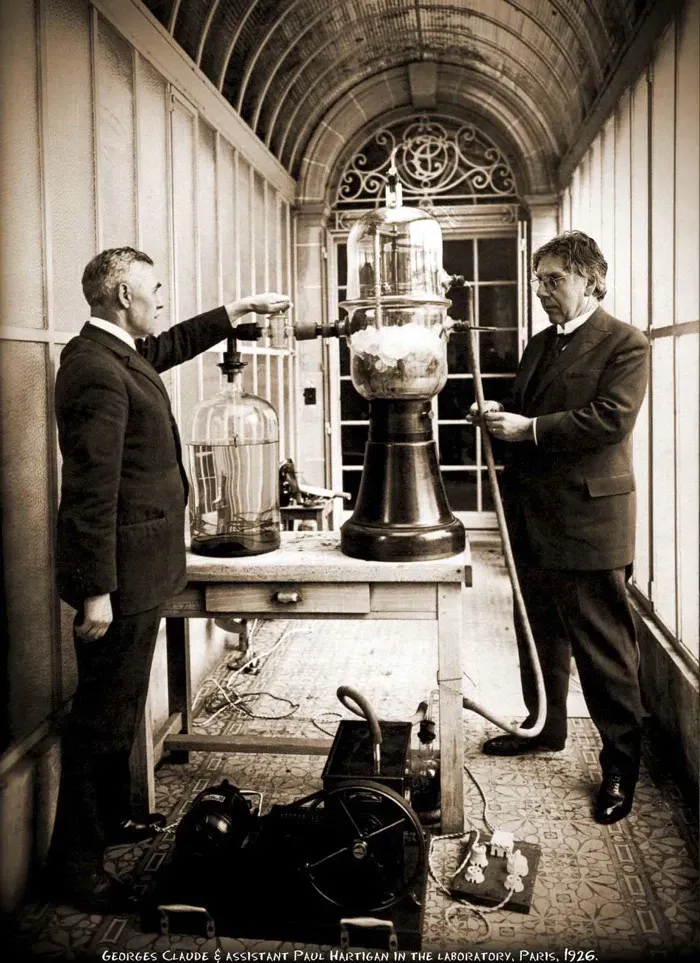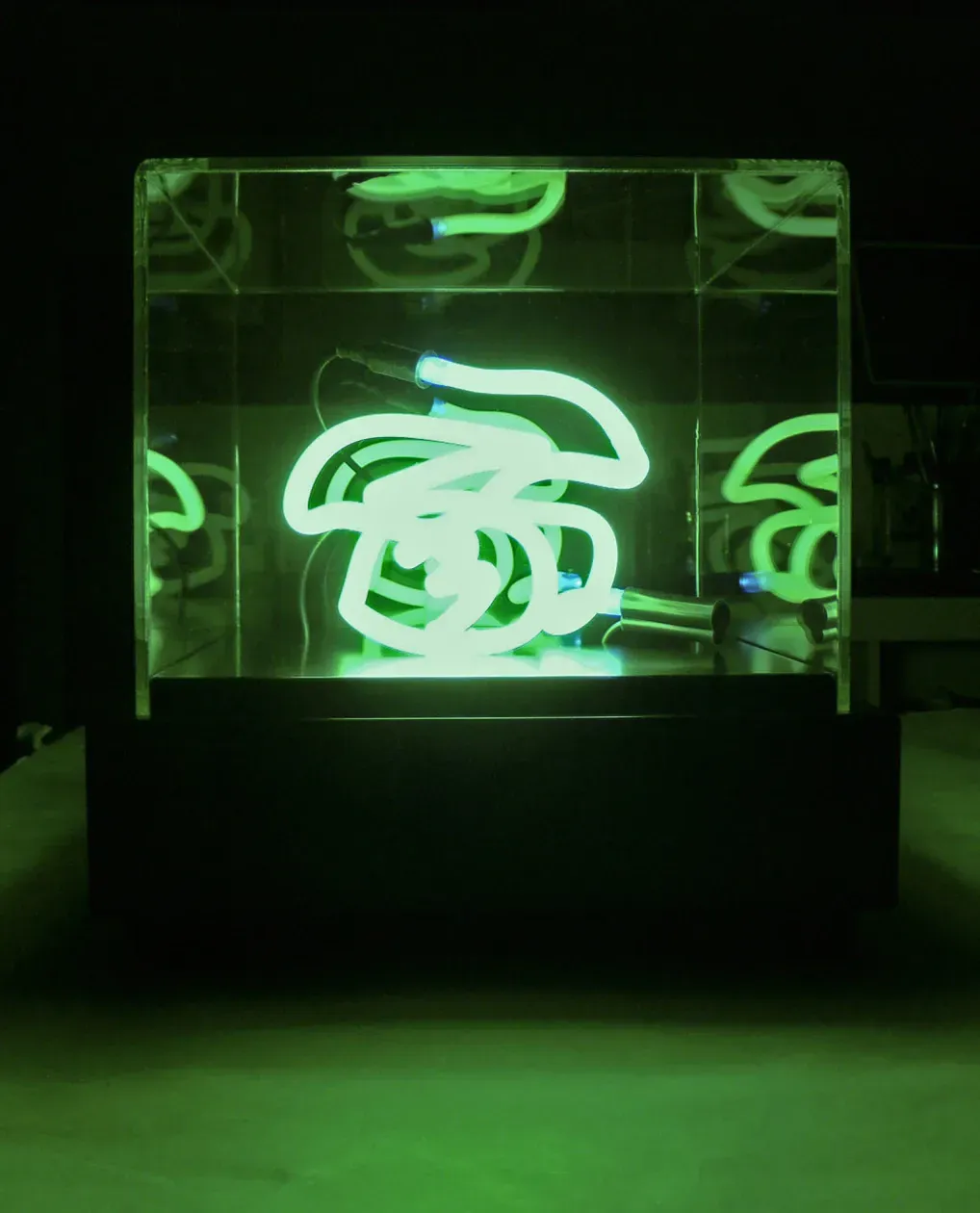The Noble Gas

Artist Paul Hartigan has recycled rare glass from the 1930s to create novel light sculptures infused with the electric liquid light of neon technology.
The new works, a radical departure for Hartigan and for neon as a medium, feature in The Undrawn, an exhibition at the Artis Gallery, Parnell from 6 October to 1 November.
Artist Paul Hartigan has recycled rare glass from the 1930s to create novel light sculptures infused with the electric liquid light of neon technology.
The new works, a radical departure for Hartigan and for neon as a medium, feature in The Undrawn, an exhibition at the Artis Gallery, Parnell from 6 October to 1 November.
Hartigan has been associated with neon over a career that has seen his work represented in many of the country’s major art institutions and public spaces.
The Undrawn exhibition highlights a new development in his art practice. Traditionally used as signage, Hartigan has adapted the almost-century old technology invented by Parisian inventor Georges Claude, into an array of three-dimensional objects.
The fine glass tubes pumped full of electrically charged neon and argon gas, (known as Noble gases) glow like ghostly auras captured in a fringe science experiment. The works push the medium beyond its two-dimensional signage roots, to create 3D, whirling, curling tubes of light.
The twisted forms can be read as references to the complexities of the organic world, screwed up paper, or even internal organs.
Housed and reflected and re-reflected in modernist transparent cases, the works are transformed into alien artifacts. They assume a sculptural presence and complexity that well and truly says good-bye to neon’s origin as a medium for signs.
Hartigan describes his drawing practice, as working at anti-discipline. In doing so he follows in the steps of Len Lye and Tom Kreisler, artists who trusted their instincts to access the purest emotions, the subconscious and ancient animal part of the human brain.
He says, “These new works have jumped off the wall and become 3-D, a surprise even to me, because generally I draw on a 2-D surface - there are no patterns here, each work is completely unique and with no possible means of reproducing it again, even for me.”
Hartigan creates each work with a glass technician, mindful of the physics of heated glass and charged gas, replicating the artist’s concepts for the real world. None of these works can be replicated and in their construction Hartigan has used rare material, like the ghostly green uranium glass he salvaged from one of the early New Zealand neon sign businesses.
Background:
Paul Hartigan is represented in major national collections including Te Papa Tongarewa, Auckland Art Gallery, the Sarjeant and Govett-Brewster Art Galleries. His large-scale neon installations are on permanent display at the University of Auckland (Colony, 2004) and the Govett-Brewster Art Gallery (Pathfinder, 1997). He is represented by Artis Gallery, Auckland, Black Barn Gallery, Hawke’s Bay and Page Blackie Gallery, Wellington.
